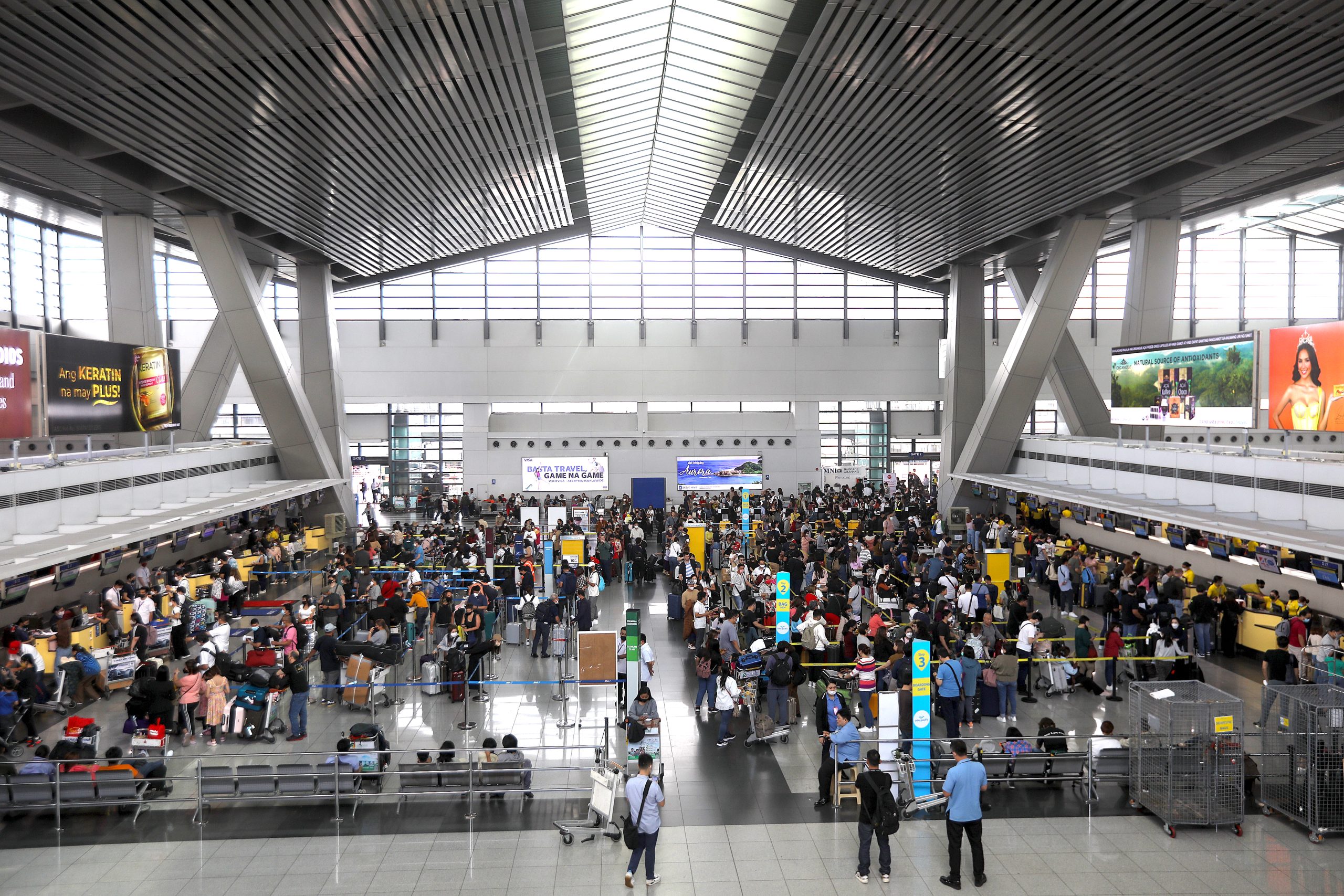News
CAAP apologizes over fiasco; to procure CNS/ATM backup system

FILE: Passengers at NAIA Terminal 3 in Pasay City queue at the check-in counter as it resumes its operation after Air Traffic Management Center of the Civil Aviation Authority of the Philippines experienced a technical issue on Sunday (Jan. 1, 2023) (PNA photo by Yancy Lim)
MANILA – The Civil Aviation Authority of the Philippines (CAAP) is planning to acquire a backup system for its Communications, Navigation, Surveillance/Air Traffic Management (CNS/ATM) to prevent the New Year’s Day air traffic glitch from happening again.
This is what CAAP Director General Manuel Antonio Tamayo told the senators Thursday as he appeared before the Committee on Public Services hearing the incident that caused cancellations and delayed flights affecting thousands of passengers.
Tamayo, at the same time, apologized to the public for what happened and said CAAP is taking full responsibility and accountability for the fiasco.
“On behalf of CAAP and DOTr (Department of Transportation), we again extend our sincerest apologies to all those who were inconvenienced and greatly affected by this circumstance which is something we’re not proud of,” he said.
“We take this as a lesson, and we manifest to this honorable committee and fellow Filipinos that we take full responsibility and accountability for what happened,” he added.
And while CAAP is taking full responsibility for what happened, Tamayo said they have initiated measures that would ensure that the existing Air Traffic Management Center (ATMC) has its backup system.
“CAAP has already initiated measures to ensure systems redundancy and upgrade in the existing CNS/ATM. DOTr and CAAP met with the representative of the system supplier on January 5, 2023, to finalize the terms,” Tamayo said.
He added that this may be completed during the first quarter of 2023.
“We commit to see through this ordeal, remain transparent in all our dealings and of service to the Filipinos, and ensure that our skies are safe,” he assured.
At a House hearing earlier this week, Tamayo said CAAP has already purchased new uninterruptible power supply (UPS) units for its CNS/ATM as part of measures that would prevent similar incident in the future.
But he clarified that they would not discard the older UPS units that can still be maintained and used as a backup.
Senator Grace Poe, chair of the Senate Committee on Public Services, earlier said the body would investigate the air system glitch, which she said might be a national security problem.
Senate Majority Leader Joel Villanueva, Senators Jinggoy Estrada, Risa Hontiveros, and Ramon Revilla Jr. have also sought an investigation of the same.
“Knowing what and why it happened and seeking accountability is in our best interest. But at the end of the day, our goal is to make sure this will not happen again – not only by upgrading the system or replacing the equipment but also making sure that the institutions running these are empowered and capacitated,” Poe said in her opening statement.
“There are many theories being posited but the only real answer will have to come from CAAP as it has all the logs of the incident. It is important to note that CAAP follows the nonpunitive nature of investigations,” she added.
According to Tamayo, the CNS/ATM was inaugurated on Jan. 16, 2008, to make the country’s airspace safer, minimize flight delays, and improve the overall travel experience by adding 10 more to the previous three radars to cover 100 percent of Philippine airspace.
The facility’s procurement started in 2009 and was divided into Packages 1 and 2 which cost about USD10 billion.
“Package 1 is the construction of the Air Traffic Management Center or the ATMC in Pasay City. Package 2 is the construction of all other facilities to complete the CNS/ATM. After 4 years, the CNS/ATM was completed and turned over to CAAP on October 16, 2017, and inaugurated in 2018,” Tamayo said.
The UPS of the CNS/ATM, which Tamayo cited to have caused the glitch, de-energized the facility around 9:49 a.m. on Jan. 1 as it detected a flaw in the system.
The CAAP chief clarified that the Cybercrime Investigation and Coordinating Center conducted a parallel investigation of the incident on Jan. 3 and found out that the incident is unlikely due to a cyber attack.





















